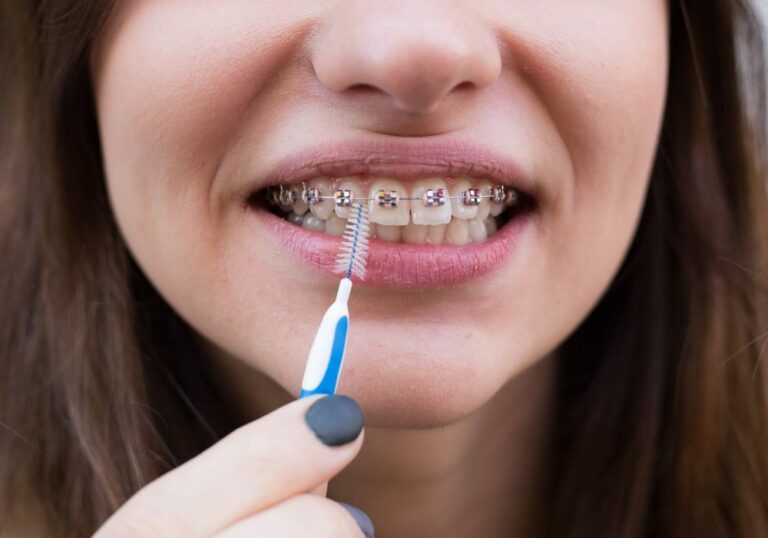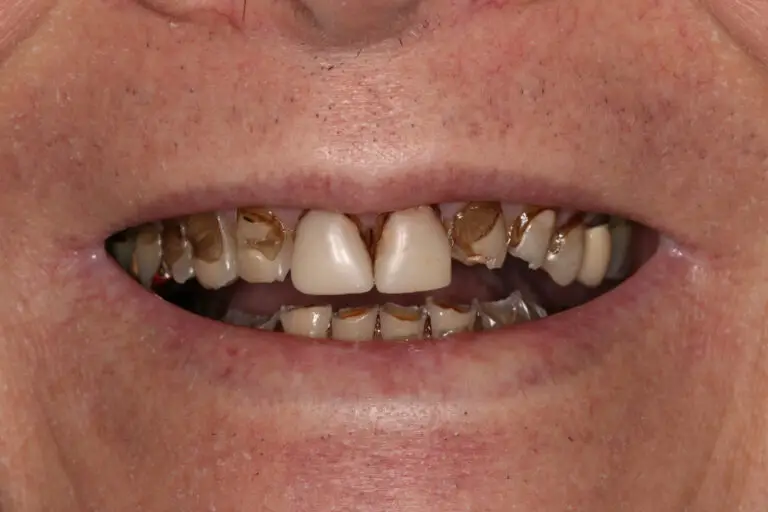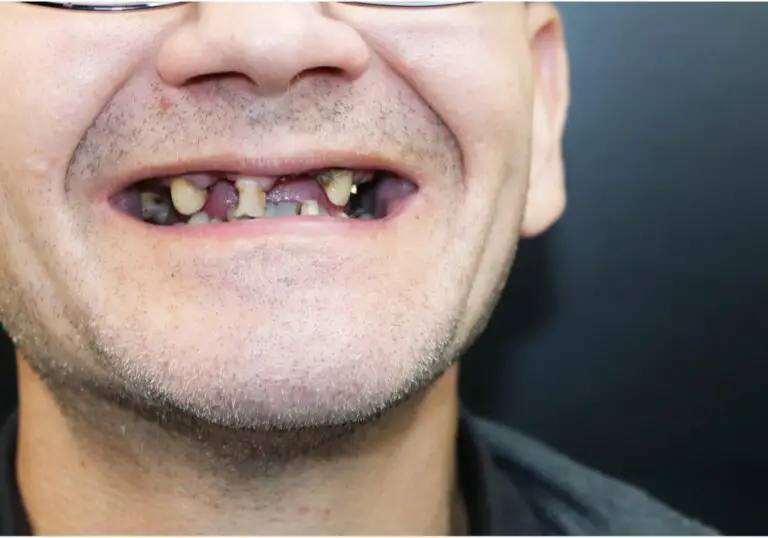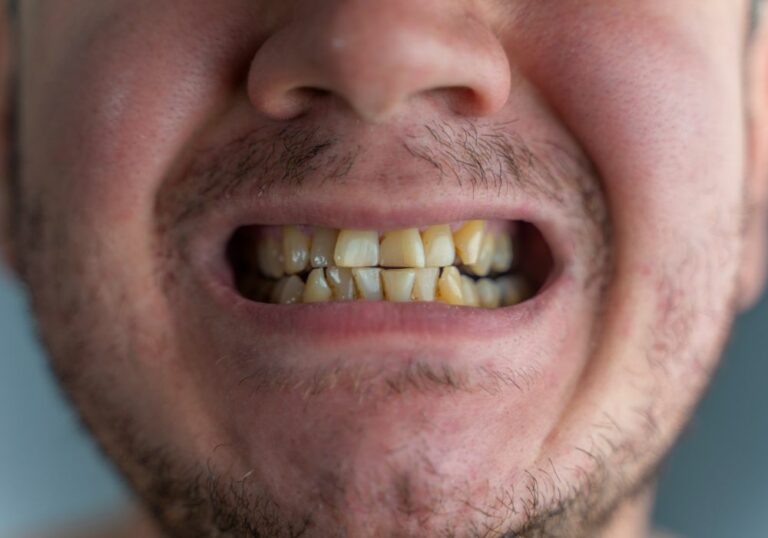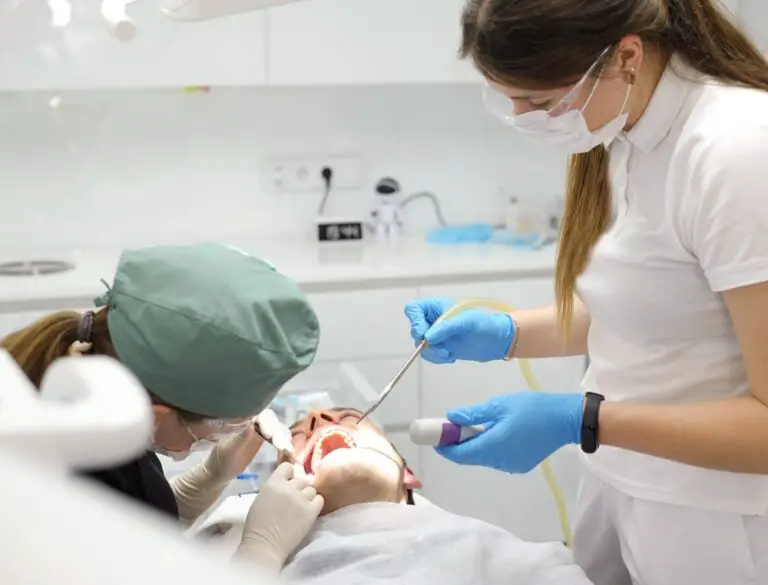Keeping your furry friend’s teeth clean and healthy is essential for their overall well-being, but brushing a dog’s teeth can be a daunting task, especially if they don’t like the taste of toothpaste. However, there are still ways to clean their teeth without the use of toothpaste. In this article, we’ll explore some effective ways to brush your dog’s teeth without toothpaste.
The first step to brushing your dog’s teeth without toothpaste is to get them comfortable with the idea of brushing. You can start by using your finger or a soft cloth to rub the outer surfaces of their teeth, focusing on the area where the gum touches the tooth surface. This will help get your dog used to the feeling of brushing and prepare them for the next step.
Once your dog is comfortable with the idea of brushing, you can move on to using a brush or soft cloth along with a mild cleaning agent. Avoid using toothpaste that contains fluoride, as it can be harmful to your dog if ingested. Instead, consider using a mixture of water and powdered vitamin C or ester-C, which can be an effective and safe way to clean your dog’s teeth.
Understanding Your Dog’s Dental Health
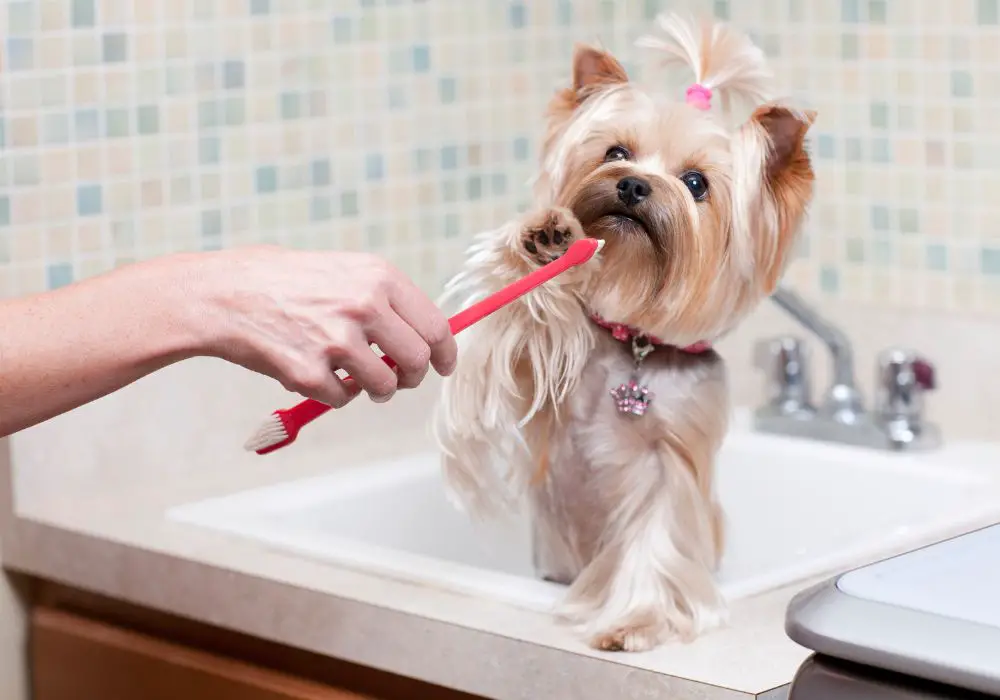
Taking care of your dog’s dental health is an important part of being a responsible pet owner. Just like humans, dogs can suffer from dental problems such as tooth decay, gum disease, and bad breath. By understanding your dog’s dental health, you can take steps to prevent these issues and keep your furry friend healthy and happy.
Here are some things you should know about your dog’s dental health:
The Anatomy of a Dog’s Mouth
Dogs have 42 teeth, which are designed for tearing, chewing, and grinding food. Their teeth are also important for self-defense and play. Just like humans, dogs have different types of teeth, including incisors, canines, premolars, and molars. Each type of tooth serves a specific purpose in your dog’s mouth.
Signs of Dental Problems
It’s important to keep an eye out for signs of dental problems in your dog. Some common signs include:
- Bad breath
- Yellow or brown buildup on teeth
- Swollen or bleeding gums
- Loose or missing teeth
- Difficulty eating or chewing
- Drooling excessively
If you notice any of these signs, it’s important to take your dog to the vet for a dental exam.
Preventing Dental Problems
The best way to prevent dental problems in your dog is to establish a good dental hygiene routine. This includes:
- Brushing your dog’s teeth regularly
- Providing dental chews and toys
- Feeding your dog a healthy diet
- Regular dental check-ups with your vet
By taking these steps, you can help keep your dog’s teeth and gums healthy and prevent dental problems from developing.
Alternative Tools for Dog Teeth Cleaning
If your dog hates toothpaste, there are still alternative tools you can use for their teeth cleaning. Here are a few options to consider:
Dog Dental Chews
Dog dental chews are a great way to clean your dog’s teeth while also satisfying their chewing needs. Dental chews come in a variety of shapes and sizes, and some are even designed to be easily digestible. Look for chews that have been approved by the Veterinary Oral Health Council (VOHC) to ensure they are effective in reducing plaque and tartar buildup.
Dog Toothbrushes
If your dog tolerates toothbrushing but dislikes the taste of toothpaste, you can try using a toothbrush without toothpaste. The mechanical action of brushing alone can still help remove plaque and tartar. Look for a toothbrush designed specifically for dogs, with soft bristles and a long handle for easy reach.
Dog Dental Toys
Dental toys are another great option for cleaning your dog’s teeth. Look for toys with ridges, bumps, or textures that can help scrub away plaque and tartar. Some dental toys even have spaces where you can add toothpaste or dental treats for extra cleaning power. Just be sure to supervise your dog while they play with dental toys to ensure they don’t accidentally swallow any pieces.
Remember, while alternative tools can help keep your dog’s teeth clean, they should not replace regular dental checkups with your veterinarian. If your dog has significant plaque or tartar buildup, they may need a professional cleaning under anesthesia.
Natural Ingredients for Dog Teeth Cleaning
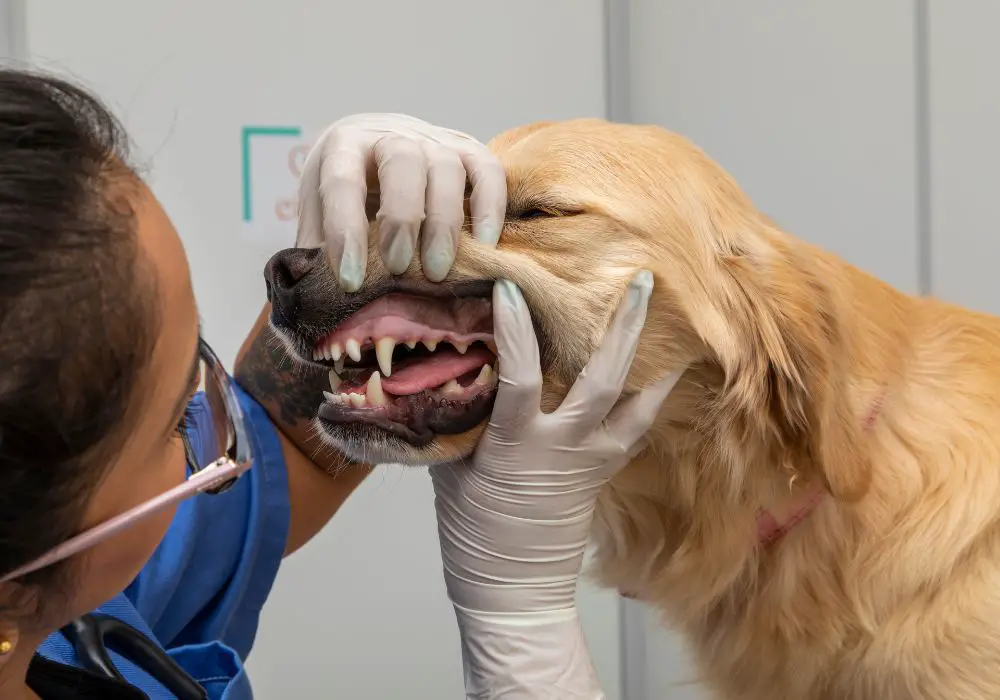
If you’re looking for a natural way to clean your dog’s teeth without using toothpaste, there are several ingredients you can use that are safe and effective. Here are some natural ingredients you can use to keep your dog’s teeth clean and healthy:
Coconut Oil
Coconut oil is a popular ingredient for dog teeth cleaning because it has antibacterial properties that can help fight plaque and bad breath. You can use coconut oil in several ways to clean your dog’s teeth:
- Brush your dog’s teeth with a mixture of coconut oil and baking soda.
- Rub coconut oil on your dog’s teeth and gums with a soft cloth or your finger.
- Add a teaspoon of coconut oil to your dog’s food to help clean their teeth from the inside out.
Baking Soda
Baking soda is another natural ingredient that can help clean your dog’s teeth. It works by neutralizing acids in the mouth that can cause plaque and bad breath. Here are some ways you can use baking soda to clean your dog’s teeth:
- Mix baking soda with water to create a paste and brush your dog’s teeth with it.
- Sprinkle baking soda on your dog’s toothbrush and brush their teeth.
- Add a small amount of baking soda to your dog’s food to help clean their teeth from the inside out.
Parsley
Parsley is a natural breath freshener that can help reduce bad breath in dogs. It contains chlorophyll, which can help neutralize odors in the mouth. Here’s how you can use parsley to clean your dog’s teeth:
- Add fresh parsley to your dog’s food.
- Make a parsley tea by steeping fresh parsley in hot water and letting it cool. Use the tea to rinse your dog’s mouth after meals.
Using natural ingredients to clean your dog’s teeth is a safe and effective way to keep their teeth clean and healthy. Try incorporating some of these ingredients into your dog’s dental routine to keep their teeth looking and feeling their best.
Techniques for Brushing Your Dog’s Teeth Without Toothpaste
Step by Step Guide
Brushing your dog’s teeth without toothpaste can seem like a daunting task, but with the right technique, it can be a simple and effective way to maintain your dog’s dental health. Here’s a step-by-step guide to help you get started:
- Start by choosing a soft-bristled toothbrush or a piece of gauze to use as a brush. You can also use your finger wrapped in a piece of gauze if your dog is resistant to a brush.
- Wet the brush or gauze with water or a mild cleaning agent, such as a mixture of one cup water and 1/2 teaspoon powdered vitamin C or ester-C.
- Gently lift your dog’s lip and begin brushing in a circular motion along the gum line. Focus on the outer surfaces of the teeth, as this is where plaque and tartar tend to accumulate.
- Be sure to brush the back molars, which are often neglected but can be prone to dental problems.
- Brush for 30 seconds to a minute, gradually increasing the time as your dog becomes more comfortable with the process.
- Reward your dog with praise and a treat after each brushing session to reinforce positive behavior.
Tips for Dogs Who Resist
If your dog is resistant to having their teeth brushed, don’t worry. Here are a few tips to help make the process easier:
- Start slowly, with short brushing sessions of just a few seconds at a time.
- Use a toothbrush or gauze that is small enough to fit comfortably in your dog’s mouth.
- Make the experience positive by using treats and praise to reward good behavior.
- Try different flavors of toothpaste or cleaning agents to find one that your dog enjoys.
- Use a toothbrush or gauze that is soft and gentle to avoid causing discomfort.
- Be patient and persistent, as it may take several weeks for your dog to become comfortable with the process.
By following these techniques and tips, you can help maintain your dog’s dental health without the use of toothpaste. Remember to consult with your veterinarian if you have any concerns about your dog’s dental health or if you need additional guidance on how to brush your dog’s teeth.
Maintaining Your Dog’s Dental Health Without Toothpaste
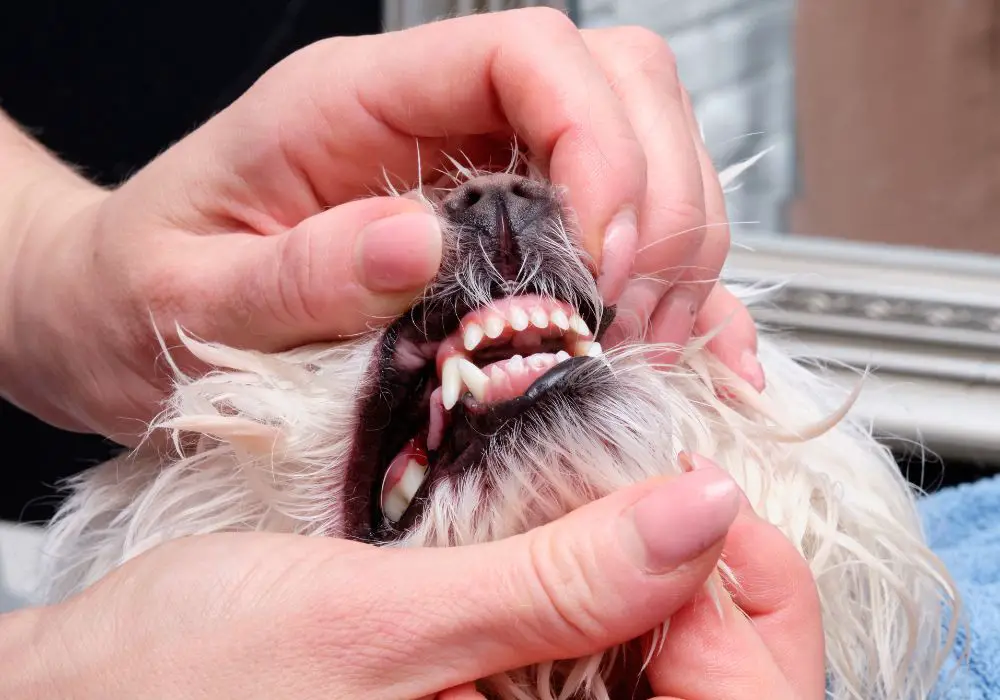
If you’re looking for ways to maintain your dog’s dental health without toothpaste, there are several things you can do. Here are some tips to help keep your dog’s teeth clean and healthy:
Regular Check-ups
Regular check-ups with your veterinarian are essential for maintaining your dog’s dental health. During these check-ups, your vet can examine your dog’s teeth and gums, and identify any potential problems. They can also provide you with advice on how to keep your dog’s teeth clean and healthy.
Healthy Diet
A healthy diet is also important for maintaining your dog’s dental health. Feeding your dog a balanced diet that is high in protein and low in carbohydrates can help prevent the buildup of plaque and tartar on their teeth. You can also consider feeding your dog dental chews or treats that are designed to help clean their teeth.
In addition to regular check-ups and a healthy diet, there are other things you can do to maintain your dog’s dental health. These include:
- Brushing your dog’s teeth regularly with a toothbrush and toothpaste designed for dogs
- Providing your dog with plenty of toys and chews to help keep their teeth clean
- Using dental wipes or sprays to help remove plaque and tartar from your dog’s teeth
- Adding a water additive to your dog’s drinking water to help promote dental health
By following these tips, you can help maintain your dog’s dental health without the use of toothpaste. Remember, a healthy mouth is essential for your dog’s overall health and well-being, so it’s important to take care of their teeth and gums.
Frequently Asked Questions
What are some alternatives to toothpaste for brushing my dog’s teeth?
If you don’t have toothpaste for your dog, there are some alternatives you can use. For example, you can use a mixture of baking soda and water, or a mixture of coconut oil and baking soda. These mixtures can help remove plaque and bacteria from your dog’s teeth.
Can I clean my dog’s teeth without a toothbrush?
Yes, you can clean your dog’s teeth without a toothbrush. You can use a soft cloth or gauze wrapped around your finger to gently rub your dog’s teeth and gums. This can help remove plaque and bacteria from your dog’s mouth.
How can I naturally clean my dog’s teeth?
Some natural ways to clean your dog’s teeth include feeding them crunchy fruits and vegetables, such as carrots or apples, which can help scrape plaque off of their teeth. You can also give them raw bones or dental chews, which can help remove plaque and promote healthy teeth.
Are there any dental sprays that can help clean my dog’s teeth?
Yes, there are dental sprays that can help clean your dog’s teeth. These sprays contain enzymes that can break down plaque and bacteria in your dog’s mouth. However, it’s important to note that dental sprays should not be used as a substitute for regular brushing and dental care.
What are some vet-recommended methods for cleaning my dog’s teeth at home?
Some vet-recommended methods for cleaning your dog’s teeth at home include using a toothbrush and toothpaste specifically designed for dogs, feeding them dental chews, and providing them with regular dental check-ups. It’s important to consult with your vet to determine the best dental care plan for your dog.
Can coconut oil be used to clean my dog’s teeth?
Yes, coconut oil can be used to clean your dog’s teeth. Coconut oil has natural antibacterial properties that can help remove plaque and bacteria from your dog’s mouth. You can apply coconut oil to a soft cloth or gauze and gently rub your dog’s teeth and gums. However, it’s important to note that coconut oil should not be used as a substitute for regular brushing and dental care.


